Contents:
XDR software is an advanced threat detection platform that specializes in correlating different security tools and alerts into one unified dashboard. In doing so, it makes it much easier to address security issues, streamlining threat detection and response by integrating multiple security layers into one dashboard.
XDR products are some of the most advanced tools in the market – and they’re increasingly becoming the industry standard for effective threat detection. But not all products are built the same.
That’s why it’s crucial to assess XDR solutions for their effectiveness, compatibility, and support to ensure comprehensive threat protection.
In this article, we explore the nine best XDR software solutions and tools in 2026.
What is XDR?
XDR (Extended Detection and Response) is a consolidated approach to threat detection. It aims to combine technology that was historically split between several different products, including endpoint detection and response, DNS security tools, SIEMs, SOARs, and much more.
XDR is important because organizations are increasingly becoming reliant on complex and diverse IT systems, including on-premises servers, cloud environments, and much more. Historically, each of these would be monitored and protected by a separate security product. But increasingly, that approach has become unsustainable.
Therefore, XDRs enable organizations to combine multiple security solutions into one license. They also feature integrated threat intelligence, together with the most advanced threat detection functionality on the market.
In the last few years, XDR tools have become increasingly common and fundamental to the cybersecurity market. In fact, estimates suggest the market is expected to be worth a total $8.8 billion by 2028 – up from $1.7 billion in 2023.
Benefits of XDR
Read more: What is XDR?
Today, we have so many solutions to solve single issues in our organizations that the number of security solutions is becoming a risk in itself – because they all need to be maintained and updated, and all come with additional costs. All of this increases the complexity of your IT environment.
This is where the unified approach comes in. In short, it’s about trying to connect all these elements so that you get better visibility and more centralized management.
– Thomas Baasnes, Senior Director, Cybersecurity, Verdane [Source: Heimdal]
With XDR, you get an all-in-one security hub. This is an integrated control center which consolidates important threat data from right across your IT environment.
This means your security teams can spot and tackle threats quickly across all your environments. Crucially, it also includes threat intelligence integration, so you can compare signals in your own IT environment against cybersecurity insights from around the world.
Here are the main benefits of XDR tools:
- End-to-end coverage: When it comes to fighting threats, XDR solutions have your back from start to finish. By combining security threats, experts get the full context into a potential issue as soon as an alert comes through.
- Accurate threat detection and efficient response: An XDR also aggregates data from emails, computers, servers, clouds, and networks, making it much easier to spot cyber threats from across your entire environment.
- Simplified security setup: The right XDR tool enables you to reduce overlapping security products, significantly reducing both costs and manual work for your security team.
- Boost your team’s abilities: XDR software gives your team a clear overview into your security landscape, making it much easier to identify critical threats. This empowers your team to more effectively hunt down and tackle threats.
Read more: Key Benefits of XDR – Using Extended Detection and Response Prevents Data Silos
Top XDR Solutions in 2026
XDR products are becoming increasingly common in today’s cybersecurity market, with several options now on the market. But there’s significant variation in the breadth of functionality these tools offer – as well as the cost and complexity of the products.
Therefore, it’s important to consider the pros and cons of the leading options. To help with that, here’s an overview of the nine most important XDR vendors:
1. Heimdal® XDR
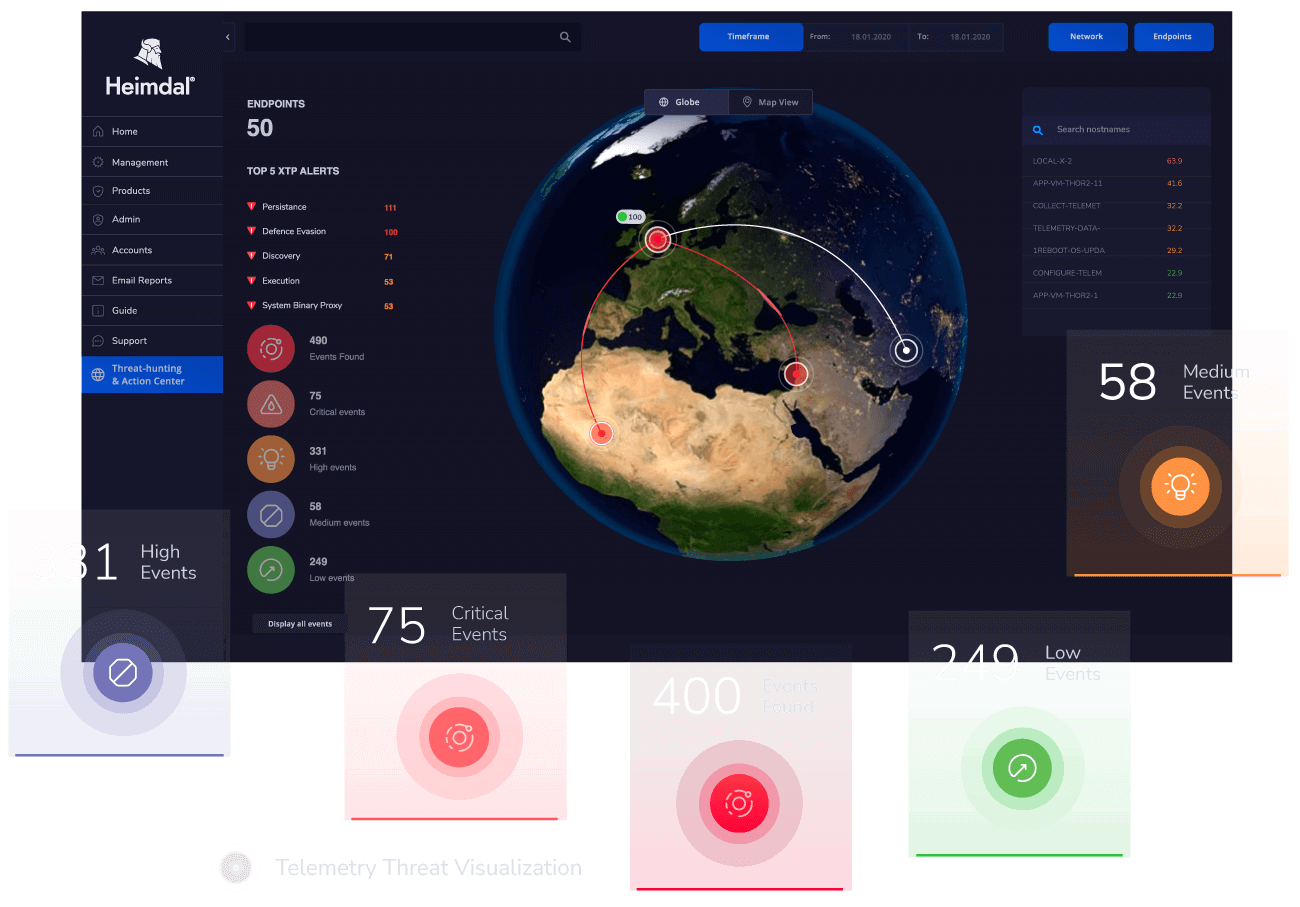
The biggest benefit of the Heimdal XDR solution is a unified and consolidated approach.
Most XDR products create a single base of operations for threat detection tools, so you can eliminate overlapping SIEMs, SOARs, EDRs, and more.
At Heimdal, we take that to the next level. In fact, we offer the widest suite of cybersecurity functionality available anywhere under a single license. With Heimdal, you don’t just get a threat detection platform – you get an entire cybersecurity suite in one product.
Our line-up of 10+ fully integrated security solutions spans the entire IT estate, allowing organizations to be proactive and compliant, whether it’s remote or onsite.
As well as that, the AI-powered endpoint security platform means you identify unknown threats, based on behavioral analysis – rather than relying on the traditional signature-based approach.
Key Features:
- Unified security platform: Get all your security tools in one place for a clear view.
- Proactive threat detection: AI and ML tech that spots threats faster and smarter.
- Automated response: Swift actions are taken automatically to stop threats.
- Cost-effective solution: Save money by consolidating security technologies.
- Simplified management: No more juggling different security solutions.
- Expert support: We’ve got your back with a dedicated team.
- User-friendly: Designed to be easy to use, even if you’re not a tech expert.
Pros
- Comprehensive suite: Beyond XDR, we offer a full suite of security solutions to cover all angles.
- Expertise and support: Our dedicated team is ready to assist you every step of the way.
- User-centric design: Our tools are designed with simplicity in mind, making security easy for everyone.
Cons
-
Limited free version: Heimdal offers a free version with basic features, but for more advanced capabilities, a subscription is required.
Pricing
Heimdal XDR Software Solution allows you to consolidate several security products into a single platform, while streamlining your IT infrastructure and reducing risk.
- Our prices cover all OSs (Windows, macOS, Android)
- We have different price ranges for seat counts (from one up to 20,000+) and servers (from one up to 100+)
- The licensing cost varies depending on the subscription period (monthly pricing/ yearly pricing/ 3-year pricing/5-year pricing)
✅Best for:
- Organizations seeking a unified cybersecurity suite with strong endpoint and network protection
- Businesses needing real-time threat intelligence and proactive threat hunting
- Companies prioritizing compliance and regulatory adherence with a user-friendly interface
❌ Not suitable for:
- Businesses that require extensive pre-built integrations
Read more: Check out the full Heimdal XDR product sheet to find out more.
2. CrowdStrike Falcon® Insight XDR
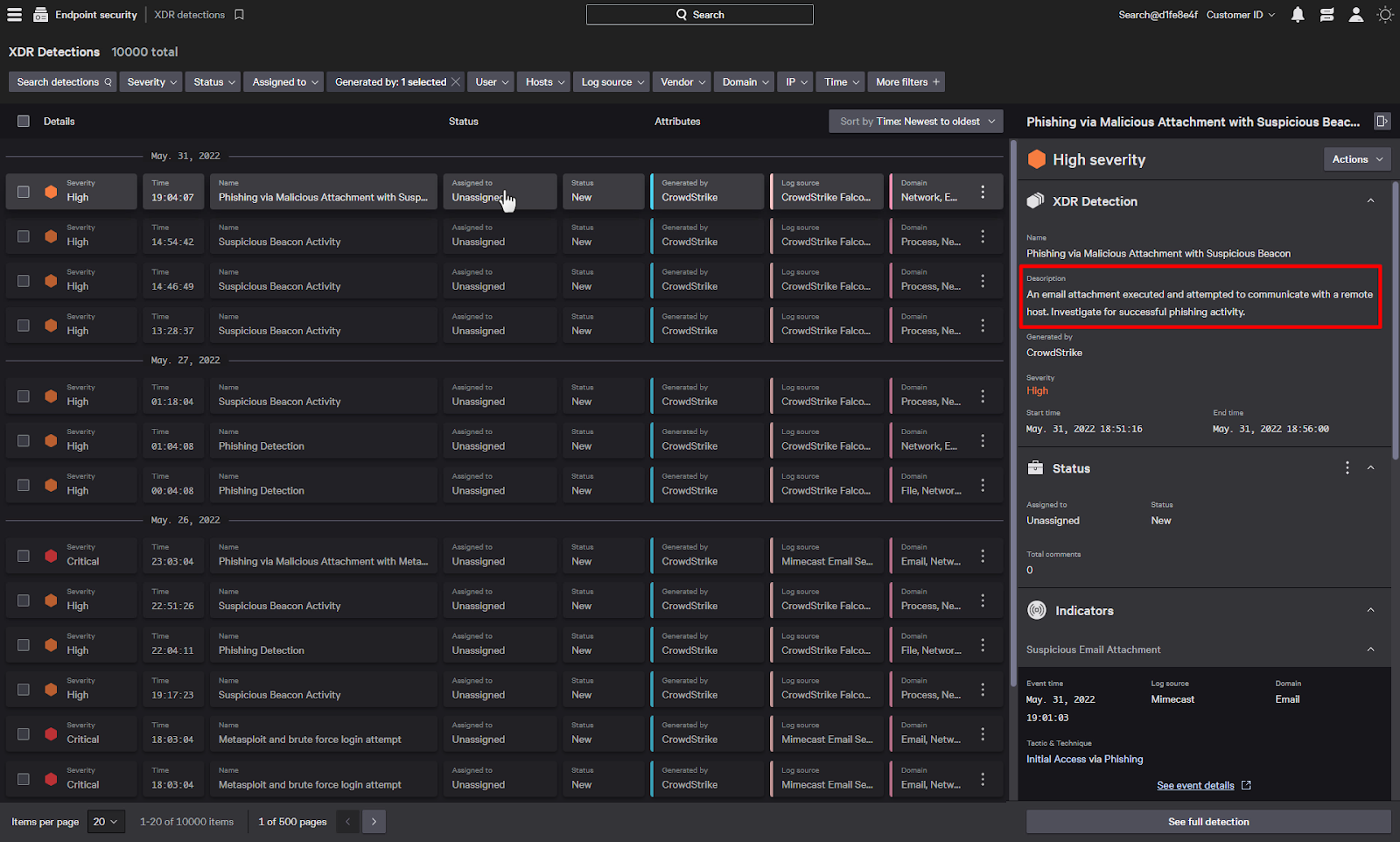
Read more: 9 Best CrowdStrike Alternatives in 2026
If you’re familiar with the cybersecurity market, you won’t be surprised to see CrowdStrike on this list. Their XDR product, Falcon Insight XDR, offers sophisticated functionality and effective real-time threat detection. But the expensive and complex approach is better suited to the largest enterprises.
Key Features
- Advanced threat detection: The platform is equipped with powerful tools to detect a wide range of cyber threats.
- Real-time monitoring: Real-time visibility into potential security incidents, helping you stay on top of emerging threats.
Pros
- Automated response: The platform can take automated actions to rapidly neutralize threats.
- Strong threat detection: The software excels at identifying threats, thanks to its advanced technology.
- Quick incident response: With automated response actions, you can react promptly to threats as they emerge.
Cons
- Complexity for beginners: For users who are new to cybersecurity tools, getting the platform up and running smoothly might pose a bit of a learning curve.
- Dependency on connectivity: The software’s real-time monitoring heavily relies on a stable internet connection, which might be a challenge.
CrowdStrike Insight XDR Pricing
- CrowdStrike Falcon has three pricing editions, starting from $6.99 up to $17.99
- A free trial is also available
✅ Best for:
- Large enterprises and security teams that need AI-driven, real-time threat detection
- Businesses prioritizing endpoint-centric XDR with cloud-native architecture
- Companies looking for strong EDR + XDR capabilities in a single platform
❌ Not suitable for:
- Small businesses with limited cybersecurity expertise
- Organizations looking for an all-in-one security suite with built-in SIEM
- Companies needing an affordable solution with low resource consumption
3. Palo Alto Networks: Cortex XDR
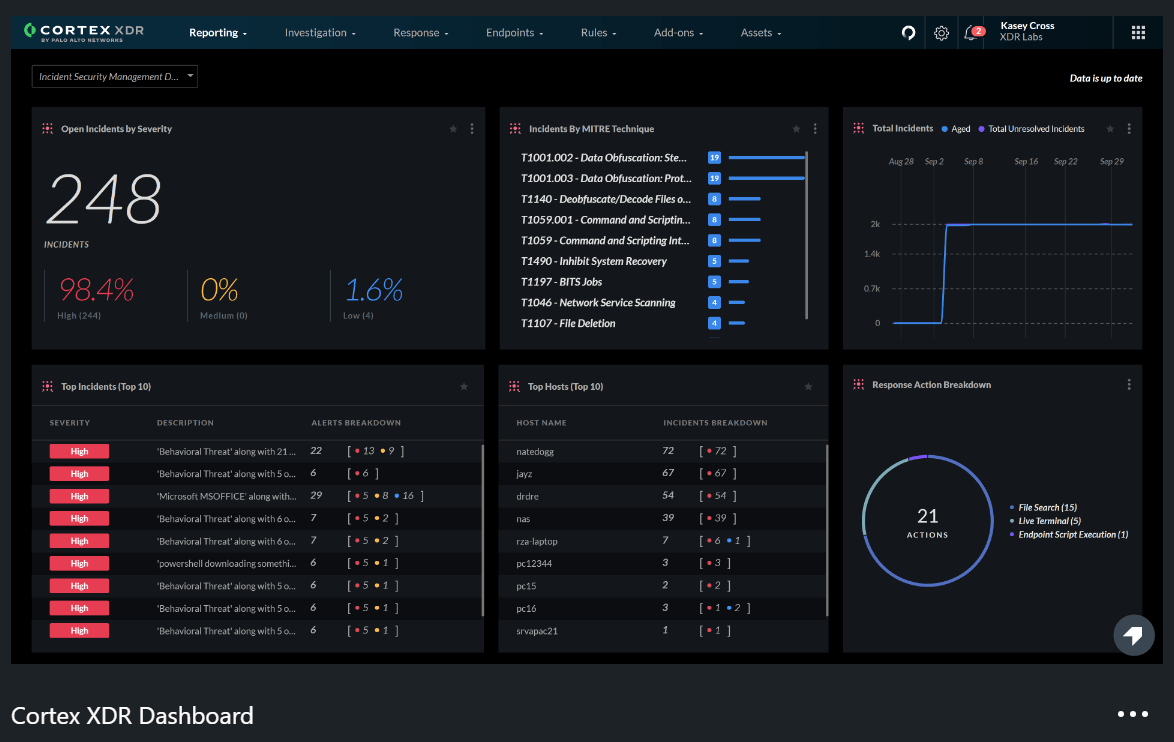
Palo Alto is a well-established cybersecurity vendor with several products across the whole range of cybersecurity options. Their XDR product, Cortex XDR is an advanced and effective product, which helps to correlate data from EDR, network traffic analysis, and cloud security analytics into a single platform.
Nonetheless, their enterprise-first approach means the platform is complex, expensive, and resource-intensive.
Key Features
- Threat hunting: It helps security teams to proactively hunt for threats, allowing them to identify and eliminate potential risks before they escalate.
- Automated incident response: Automated security operations quickly neutralize real-time threats.
Pros
- Comprehensive protection: Cortex offers multi-platform coverage, protecting endpoints, networks, and clouds all in one place.
- Smart detection: Its behavioral analytics can identify even subtle signs of threats, enhancing detection accuracy.
- Swift response: The platform’s automated incident response means threats are tackled quickly, minimizing potential damage.
Cons
- Steep learning curve: Some users found Cortex XDR’s setup and features slightly complex.
- Resource intensive: The platform’s robust capabilities are resource-intensive, which might be a challenge for smaller organizations.
Pricing
Cortex XDR comes in two tiers.
- Cortex XDR Prevent: $16,000/year/200 seats
- Cortex XDR Pro: $14,000/year/200 endpoints. Offers include 30 days of data retention
✅ Best for:
- Enterprises requiring deep integration with Palo Alto firewalls and security products
- SOC teams looking for advanced analytics, automation, and AI-driven threat response
- Organizations needing robust cloud, network, and endpoint visibility
❌ Not suitable for:
- Companies not using Palo Alto’s ecosystem (limited third-party integration)
- Small to mid-sized businesses looking for a cost-effective XDR
- Teams with minimal cybersecurity expertise due to its complexity
4. SentinelOne: Singularity XDR
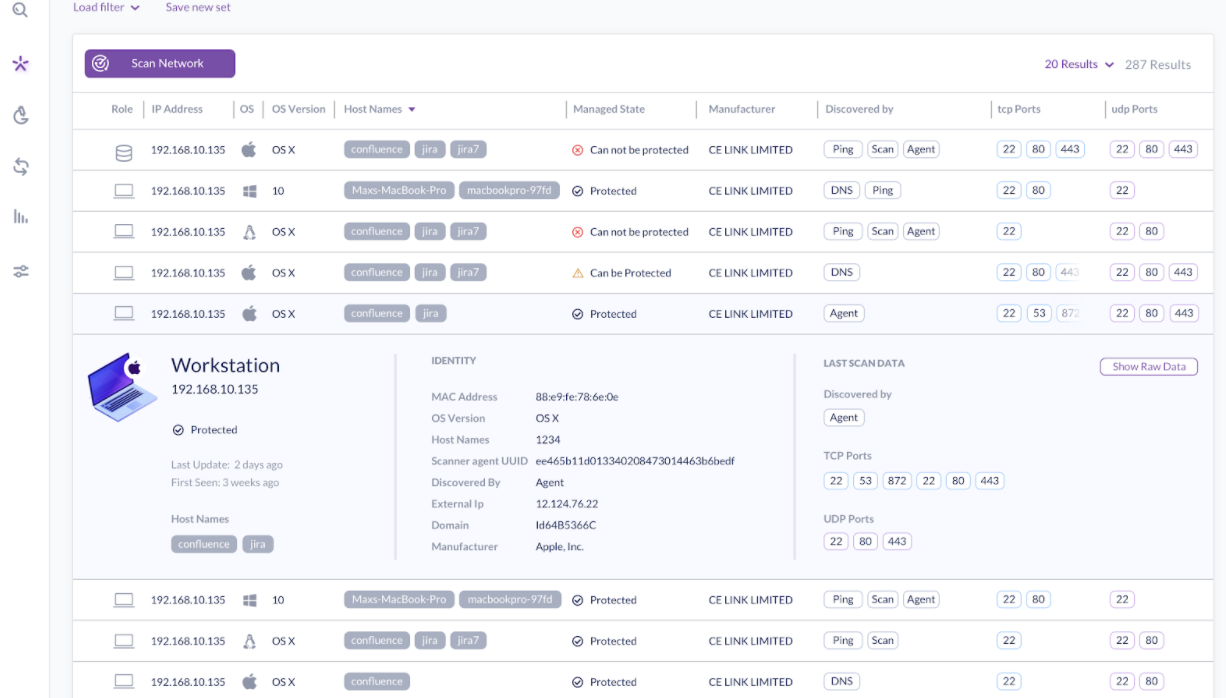
SentinelOne’s XDR product, Singularity XDR, is another popular choice. It was first released in 2020, consolidating several EDR products together into one integrated suite.
While Singularity XDR offers solid security, it requires more tech know-how to navigate the platform effectively.
Key Features
- Comprehensive threat detection: Uses advanced techniques to detect a wide range of threats.
- 360-degree visibility: This provides a complete view of your digital environment for thorough monitoring.
- Automated response: Swiftly acts against detected threats.
Pros
- Unified protection: Offers a single platform for streamlined security management.
- Innovative technology: Utilizes cutting-edge methods for effective threat detection.
- Efficient incident response: Reduces response time with automated actions.
Cons
- Integration challenges: Some users might find it challenging to integrate Singularity XDR with certain existing systems or tools.
- Limited customization: While the platform offers strong features, there might be limitations when it comes to customization to specific organizational needs.
Pricing
This vendor offers a free trial as well as several pricing tiers:
- Singularity Core: $69.99/endpoint/year
- Singularity Control: $79.99/endpoint/year
- Singularity Complete: $159.99/endpoint/year
- Singularity Commercial: $209.99/endpoint/year
- Singularity Enterprise: Contact the vendor for pricing
✅ Best for:
- Organizations needing AI-driven autonomous response capabilities.
- Businesses seeking strong endpoint and cloud security with behavioral AI
- Companies requiring fast, automated incident response with minimal human intervention
❌ Not suitable for:
- Organizations looking for extensive SIEM and SOAR integrations.
- Businesses requiring deep network detection and security features.
- Companies preferring manual threat-hunting tools over automation.
5. Trend Micro XDR
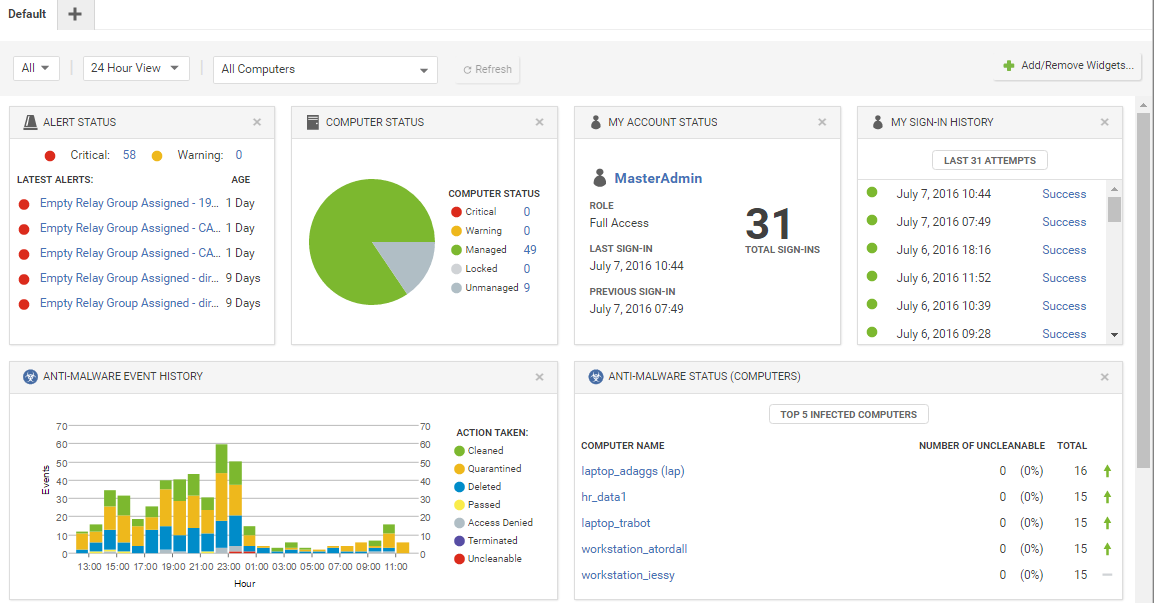
Trend Micro XDR provides comprehensive threat detection and response capabilities. Like many tools on this list, it originally combined several other Trend Micro products into one suite. It particularly focuses on cross-layered response.
Key Features
- Advanced threat detection: Trend Micro employs sophisticated methods to detect a wide range of threats across your digital environment.
- Real-time visibility: The platform offers real-time visibility into your network and endpoints, helping you stay on top of potential security incidents.
- Automated response: It automates response actions to swiftly mitigate threats once detected.
Pros
- Comprehensive detection: The XDR software excels at identifying a variety of threats using advanced techniques.
- Automated mitigation: Automated response actions help contain threats rapidly, reducing potential damage.
Cons
- Integration issues: Depending on the arrangement, integrating Trend Micro XDR with current tools may be difficult.
- Complexity: Users looking for a simple solution may encounter difficulties due to the platform’s feature-rich design.
Pricing
Pricing tiers begin at $29.95/user/year and go up to the Worry-Free Services Advanced plan at $59.87/user/year.
✅ Best for:
- Businesses seeking strong cross-layer detection across email, endpoint, server, and network
- Organizations already using Trend Micro solutions for seamless integration
- Enterprises needing a cloud-native XDR with automated correlation
❌ Not suitable for:
- Companies requiring extensive third-party security tool integrations
- Organizations with highly customized security stacks
- Teams looking for a fully AI-driven autonomous response
6. Sophos Intercept XDR

Read more: Best Sophos Alternatives and Competitors in 2026
Sophos XDR uses advanced AI for fast, precise threat detection and to actively hunt hidden threats. The product was first released in 2021 and combined tools originally available in their EDR, Intercept X, together with several other products.
Sophos XDR is particularly well-known for its ability to integrate endpoint, server, firewall, and email security. However, the complexity of the solution and lack of decent integrations means it’s not the right choice for everybody.
Key Features
- Threat hunting: The software actively searches for hidden threats, ensuring no stone is left unturned.
- Advanced AI: Sophos XDR employs smart AI technology to detect and respond to threats with speed and accuracy.
Pros
- Threat visibility: The software’s proactive threat hunting ensures potential issues are spotted early, preventing breaches.
- Automated response: Sophos XDR’s AI-driven response helps neutralize threats before they escalate.
Cons
- Complexity: Some users may find the software a bit complex to navigate.
- Integration challenges: Integrating Sophos XDR with certain existing systems might require extra effort.
- Resource consumption: The AI-powered features could impact system resources on certain setups.
Pricing
Sophos has three pricing editions, from $28 to $79. However, the XDR platform is available only on the $48 package per year per user.
✅ Best for:
- SMBs and mid-sized businesses looking for an easy-to-use XDR solution
- Companies already using Sophos security products for seamless integration
- Organizations seeking AI-powered threat detection with a strong EDR foundation
❌ Not suitable for:
- Large enterprises needing extensive forensic and threat-hunting capabilities
- Businesses looking for broad third-party security tool integration
- Teams requiring a fully autonomous, AI-driven response system
7. Cynet 360 Auto XDR
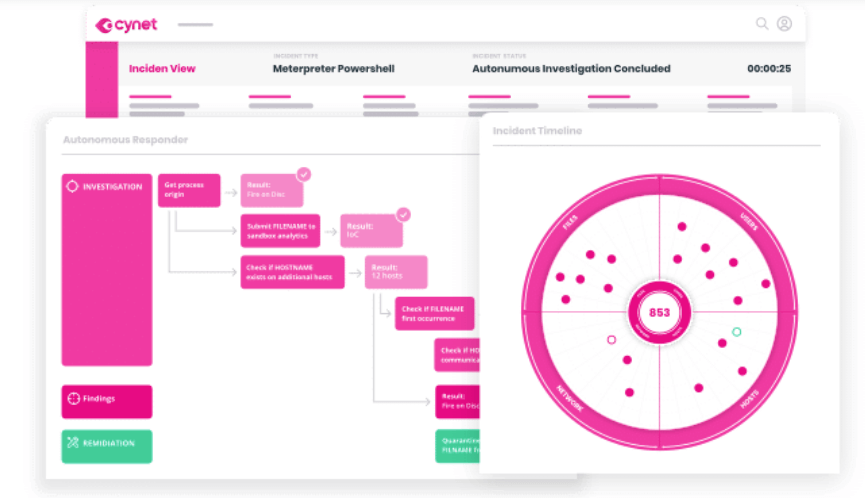
Cynet’s XDR software offers robust automated threat detection and response capabilities. Generally, it’s aimed toward mid-sized organizations, offering comprehensive tools across endpoint, network, behavioral analytics, and more.
Key Features
- Automated threat detection: The platform excels in automating threat detection, rapidly identifying potential risks across various endpoints.
- Threat hunting: It offers robust threat-hunting capabilities, allowing proactive searches for hidden threats.
Pros
- Holistic visibility: The platform provides a comprehensive view of your environment, aiding in identifying threats across various layers.
- Threat intelligence: Cynet integrates threat intelligence, enhancing its ability to spot new and evolving threats.
Cons
- Integration challenges: Integration with existing security tools might present some complexities.
- Customization limitations: The software may have limitations in terms of customization to specific needs.
Pricing
Cynet has free 14-day trials and two licensing tiers.
- Elite: $7/month/endpoint
- All in One: $9/month/endpoint
✅ Best for:
- SMBs and lean security teams needing an automated, all-in-one security platform
- Companies looking for an easy-to-deploy solution with built-in SOAR and EDR
- Organizations prioritizing affordability and simplicity in cybersecurity
❌ Not suitable for:
- Large enterprises requiring deep forensic and custom threat-hunting tools
- Businesses needing broad third-party integrations with existing security stacks
- Companies requiring highly configurable security policies and rule sets
8. Microsoft Defender XDR
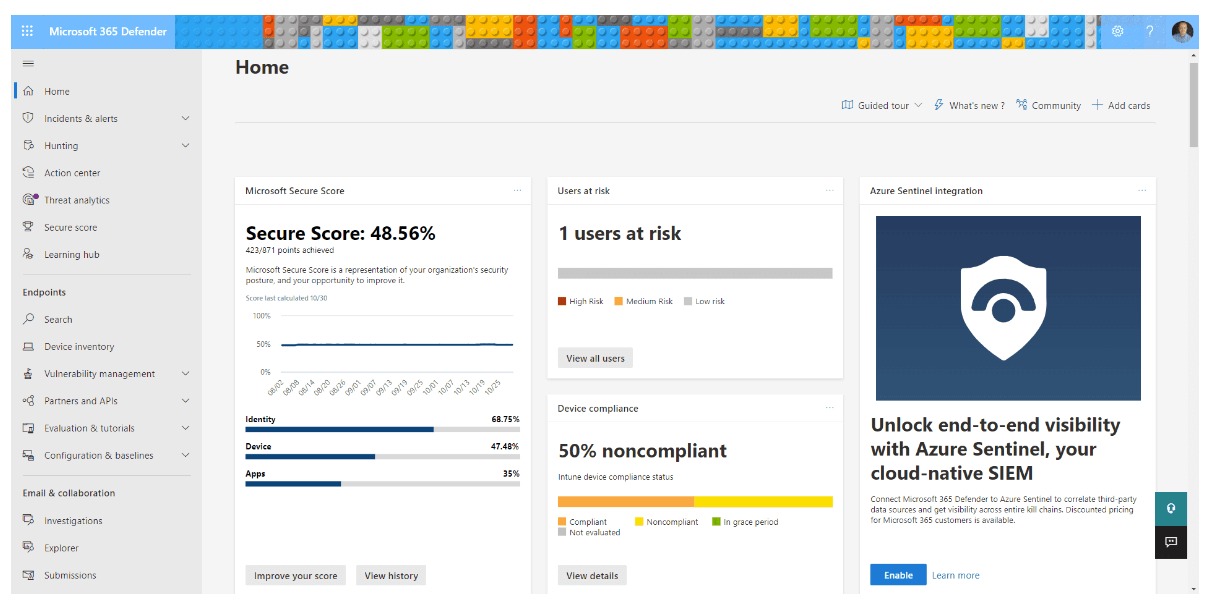
Microsoft Defender XDR was launched in 2020 as part of Microsoft’s wider security suite. It was previously known as Microsoft Threat Protection, a more traditional EDR tool.
Like all Microsoft products, this is designed to work seamlessly alongside the wider Microsoft security ecosystem.
Key Features
- Advanced threat detection: Leveraging AI and automation, it detects and responds to complex threats with smart precision.
- Integrated response: The software streamlines incident response with its integrated tools, making it easier to take swift actions against potential risks.
Pros
- Seamless integration: Easily integrates with existing Microsoft solutions, ensuring a smooth transition for organizations already using their products.
- Holistic approach: Its all-encompassing security coverage across various attack vectors provides a robust security posture.
- Scalability: If your organization plans to grow big, you’ll want to make sure this solution can handle that growth smoothly.
Cons
- Complex setup: Requires proper configuration to avoid false positives or missed threats.
- Resource-heavy: Can impact system performance, especially on older devices.
- Limited cross-platform support: Works best in Microsoft environments, with weaker third-party integration.
Pricing
Microsoft 365 Defender has two pricing tiers.
- Microsoft Defender for Office 365 (Plan 1): $2/user/month
- Microsoft Defender for Office 365 (Plan 2): $5/user/month
✅ Best for:
- Organizations deeply integrated with Microsoft 365 and Azure ecosystems
- Enterprises looking for strong cloud security and identity protection
- Businesses requiring an AI-powered security suite with automation
❌ Not suitable for:
- Companies not using Microsoft products (limited third-party integrations)
- Organizations needing a standalone XDR without dependency on Microsoft’s stack
- Teams looking for an easy-to-use, lightweight XDR solution
9. ESET Inspect
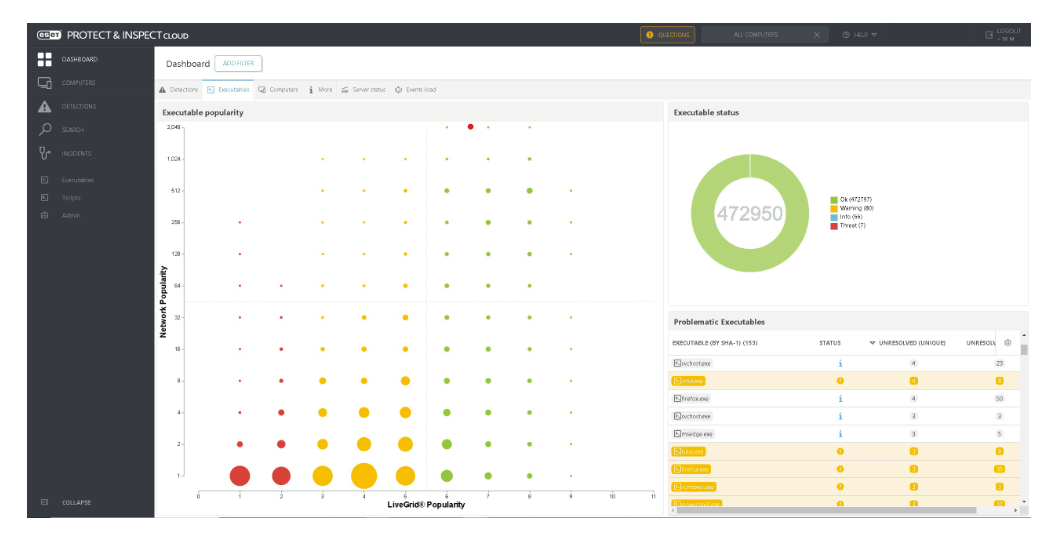
ESET Inspect delivers thorough threat analysis, real-time monitoring, and a user-friendly interface, ensuring efficient and proactive security management. Previously known as ESET Enterprise Inspector, the product is designed to integrate with other ESET solutions, such as ESET Protect.
Key Features
- Thorough threat analysis: Offers comprehensive scanning and analysis of potential threats.
- Real-time monitoring: Guards your digital environment to detect threats as they arise.
- User-friendly interface: Provides an interface that’s easy to navigate for efficient security management.
Pros
- Proactive detection: Uses advanced techniques to detect hidden threats.
- Real-time alerts: Sends alerts in real-time when suspicious activities are detected.
- Regular updates: Keeps up-to-date with the latest threat definitions.
Cons
- Integration complexity: Integrating ESET Inspect with other tools might need extra effort.
Pricing
- ESET’s extended detection and response is available in two solutions (Protect Elite and Protect MDR)
- Contact their sales department for a custom quotation
✅ Best for:
- Businesses needing a lightweight, endpoint-focused XDR solution
- Organizations prioritizing strong behavioral detection and threat hunting
- SMBs and mid-sized enterprises looking for a cost-effective XDR
❌ Not suitable for:
- Large enterprises needing extensive automation and AI-driven response
- Companies looking for deep network and cloud security integration
- Teams requiring a fully managed XDR solution
How to choose the right XDR platform
Here are five key points to consider when choosing the right XDR platform for your needs.
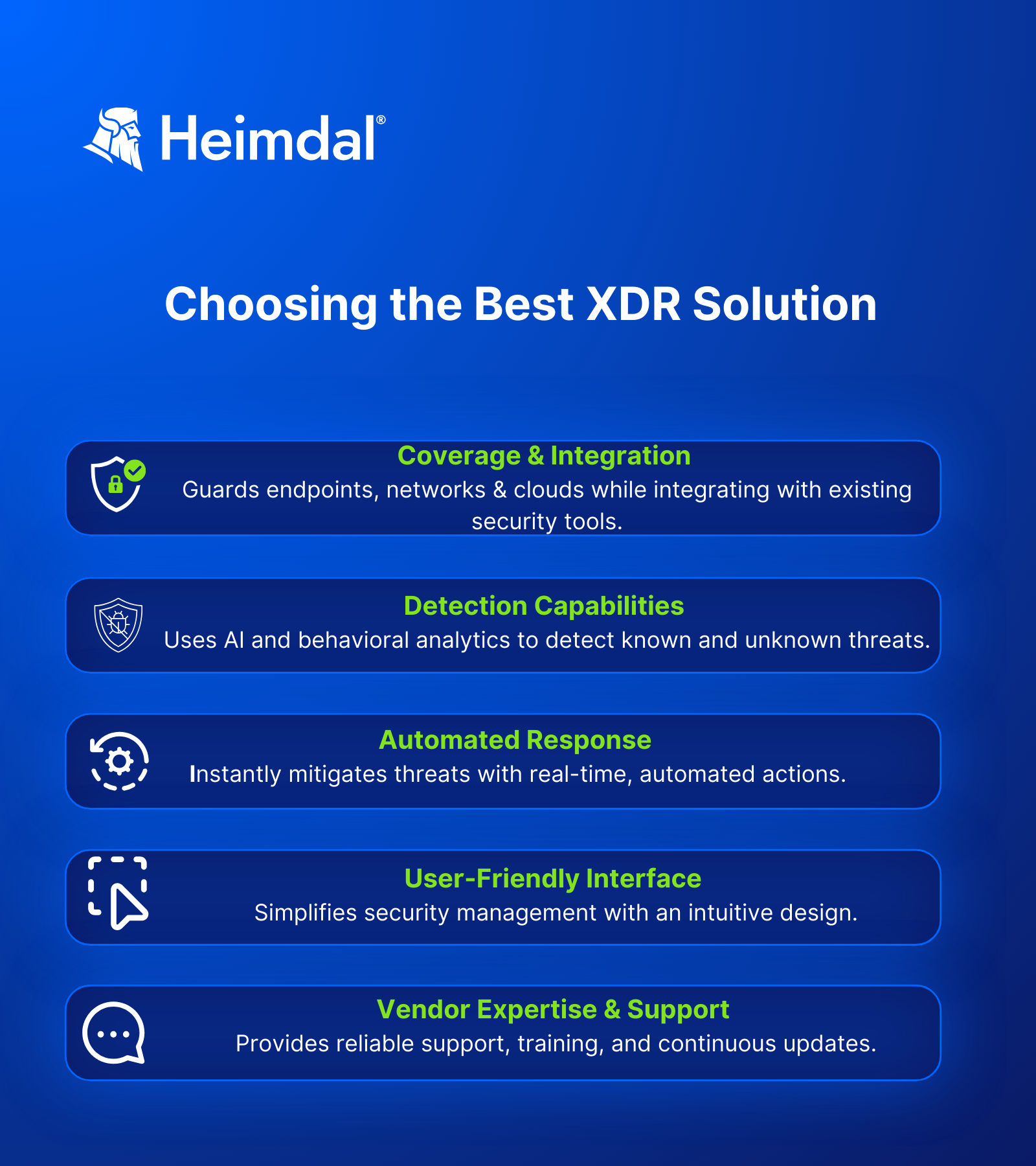
Comparison Table
To help you choose wisely, we’ve compiled key data on top XDR providers, highlighting their features, benefits, and potential drawbacks.
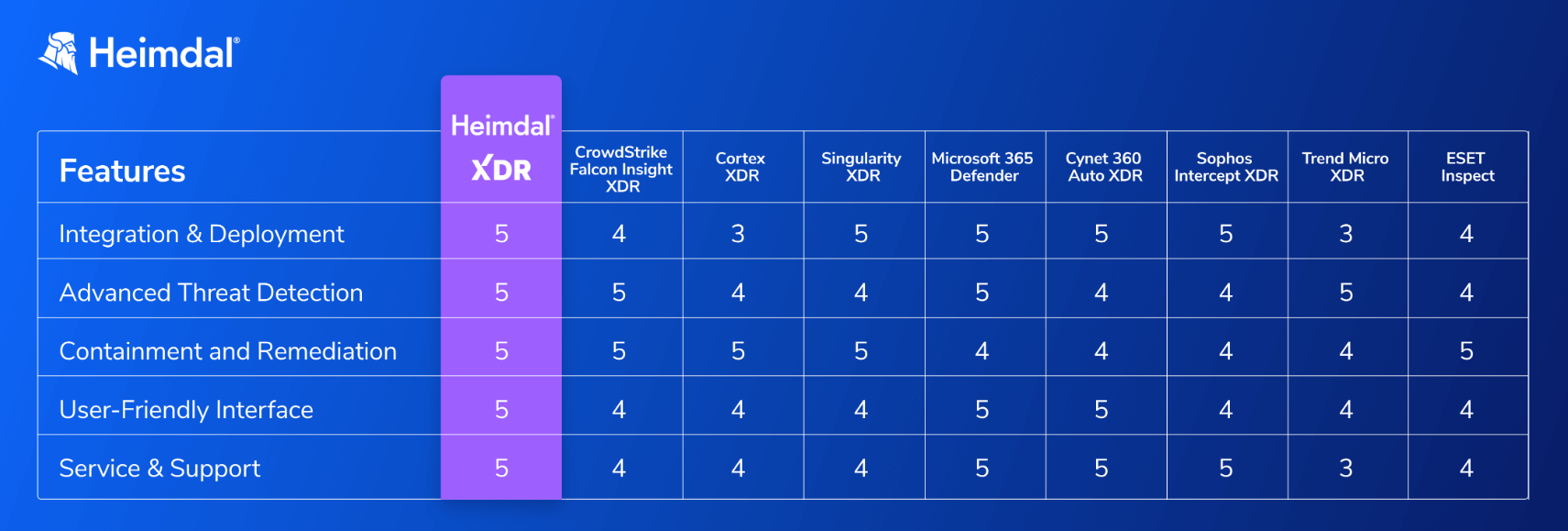
Ready for the Next Step in XDR?
While each XDR solution comes with its own set of features and capabilities, we suggest placing high importance on platforms that offer, at the very least, the following key features.
- Unified security platform: An all-in-one security center that offers complete protection and streamlined management.
- Smart threat detection and response: Using cutting-edge AI and ML technologies to identify threats quickly and intelligently.
- Cut costs and complexity: By combining several security solutions, our XDR software solution, which is incorporated into the Heimdal® Unified Security Platform, lowers complexity and costs.
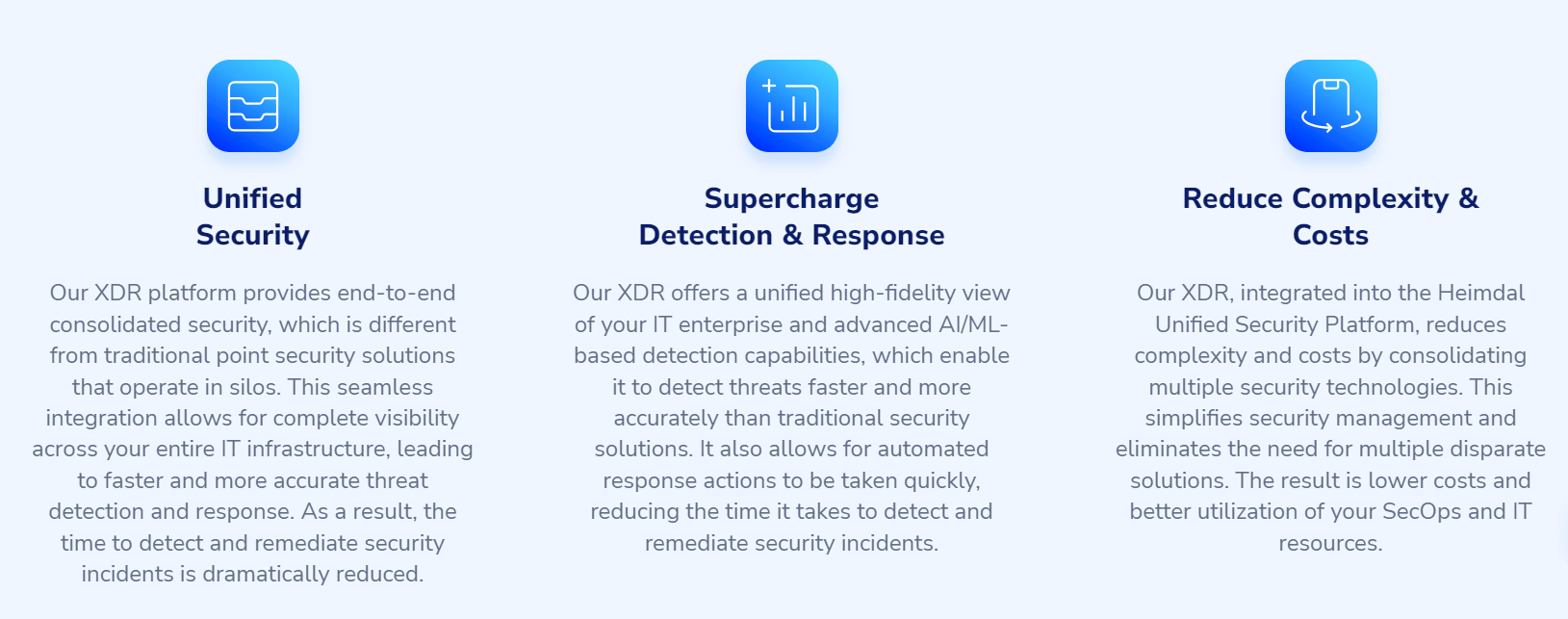
XDR Frequently Asked Questions (FAQs)
1. What is XDR Software?
XDR software (Extended Detection and Response), is like your ultimate cybersecurity detective.
It gathers and connects data from various security layers like emails, endpoints, servers, cloud workloads, and networks.
2. What is XDR vs EDR?
EDR has been specifically built for endpoints (and not networks), as per the name, while XDR refers to a multi-layered detection and response platform.
3. What are XDR Tools?
An XDR is an endpoint protection platform that collects security telemetry from endpoints, network cloud email workloads, and much more.
4. Is XDR a SIEM Tool?
To identify and mitigate risks, SIEM and XDR both collect, correlate, and analyze data. But because these kinds of technologies cannot automatically respond to incidents across endpoints, SIEM systems are restricted to providing security alerts to the IT staff.
5. What is XDR vs EDR vs SOAR?
Security Orchestration Automation and Response (SOAR) focuses on automating the response processes and triage capabilities.
Unlike the XDR software solution, SOAR does not analyze large amounts of data and can’t protect data or systems by itself.
SOAR requires integration skills to guarantee that the solution can properly integrate with the organization’s current security infrastructure.
XDR solutions offer protection against sophisticated and complicated attacks that typically escape detection by traditional security solutions.
Endpoint Detection and Response (EDR) platforms, on the other hand, were designed to identify and stop malware and online threats that target endpoints only.

- End-to-end consolidated cybersecurity;
- Complete visibility across your entire IT infrastructure;
- Faster and more accurate threat detection and response;
- Efficient one-click automated and assisted actioning










 Network Security
Network Security
 Vulnerability Management
Vulnerability Management
 Privileged Access Management
Privileged Access Management  Endpoint Security
Endpoint Security
 Threat Hunting
Threat Hunting
 Unified Endpoint Management
Unified Endpoint Management
 Email & Collaboration Security
Email & Collaboration Security










